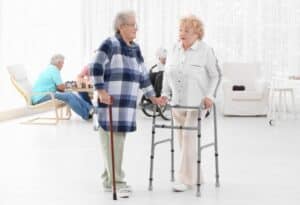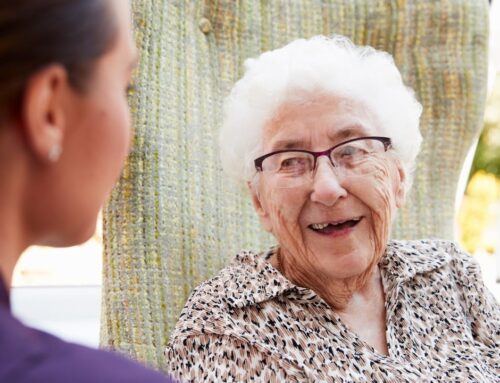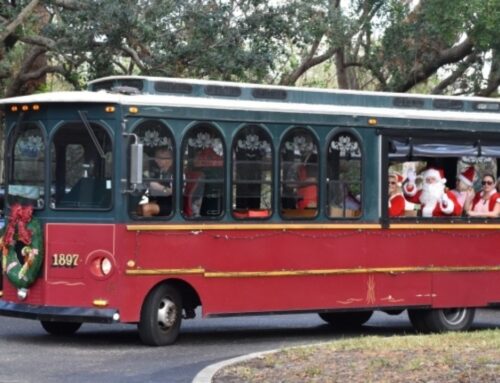In the United States today, there are approximately 30,600 assisted living communities, offering nearly 1.2 million licensed beds. In Florida, there are 2,997 assisted living communities. The demographic is 30% male and 70% female, as reported by the American Health Care Association. For those considering such communities, having an ‘Assisted Living Moving List’ can simplify the process, ensuring all necessary steps are covered.
With so many assisted living residences available, choosing the right one can be tough. Proper planning helps ease the transition.
Moving to an assisted living facility is a huge step and can feel a bit overwhelming. Whether it is for yourself or a loved one, making sure you have everything needed for a comfortable and smooth transition is key. You want the new place to feel like home, with all the essentials and personal touches that make it cozy and familiar. Choosing the right senior living community greatly impacts your loved one’s comfort and happiness.
To help you prepare for the move, we’ve created an assisted living checklist that covers all the essentials. From important documents to favorite hobbies, we’ve got you covered.
Here are the must-have items to ensure your loved one settles in comfortably and happily in their new home.
1. Essential Documents and Paperwork
-
Legal and Medical Documents
Bringing important legal documents and medical documents is crucial. Ensure you have copies of identification (driver’s license, passport), power of attorney, living will, and medical records. These documents are essential for the facility’s records and for any medical appointments or emergencies.
-
Financial Information
Gather financial documents such as insurance papers, banking information, and any relevant contracts. Having these on hand will streamline the administrative processes and ensure that all financial aspects of the move are managed efficiently.
2. Personal Items and Comforts

-
Clothing and Accessories
Pack a variety of clothing that suits all occasions and seasons. Include items like winter coats, gloves, hats, and summer apparel. Also include casual wear, formal attire, sleepwear, and accessories like hats, scarves, and belts. Special occasions and events are important social opportunities.
Ensure your loved one has outfits for holidays, family gatherings, or community events to help them feel prepared and included. Participating in social activities can also help residents feel more connected and engaged in their new environment. Make sure to bring comfortable shoes and slippers as well. Labeling clothes can help prevent any mix-ups with other residents’ items.
-
Personal Care Items
Personal care items are essential for maintaining daily routines. Pack toiletries like soap, shampoo, toothbrush, toothpaste, and any other grooming supplies. Don’t forget medications, along with a detailed list of dosages and instructions. Include any specific items like denture care products or hearing aid batteries.
3. Furnishings and Decor

-
Furniture and Bedding
Depending on the facility’s policies, consider bringing your favorite furniture pieces like a beloved chair, nightstand, or a small bookshelf. Comfortable bedding, including pillows, blankets, and bed linens, can make the new space feel more like home.
-
Personal Decor and Keepsakes
Personalizing the living space with decor items can make a significant difference. Bring family photos, artwork, and cherished mementos. These items can provide comfort and create a sense of familiarity in the new environment.
4. Electronics and Entertainment

-
Communication Devices
Staying connected with family and friends is vital. Pack devices such as smartphones, tablet, or laptop, along with their chargers. Ensure that your loved one knows how to use these devices or that assistance is available.
-
Entertainment Options
Entertainment is important for relaxation and mental stimulation. Consider bringing a TV, radio, or e-reader. Books, magazines, puzzles, and other favorite pastimes can help maintain a fulfilling daily routine.
5. Kitchen and Dining Items

-
Small Appliances
If the facility allows small kitchen appliances like a coffee maker or microwave can add convenience. Check the facility’s guidelines before bringing these items.
-
Dining Essentials
Bringing a few favorite dining items, such as a preferred mug, dish set, or utensils, can make meals more enjoyable in the dining room. This helps create a personal touch and comfort during dining.
6. Safety and Mobility Aids

-
Mobility Devices
Ensure that any necessary mobility aids, such as walkers, canes, or wheelchairs, are packed and ready to go. These items are essential for maintaining independence and safety.
-
Safety Equipment
Consider bringing safety items like grab bars, non-slip mats, or personal alarms. This aid can enhance safety and provide peace of mind for both the residents and their family.
7. For Hobbies and Interests
-
Hobby Supplies
Encouraging continued engagement in hobbies can significantly improve quality of life. Pack supplies for favorite activities like knitting, painting, or gardening. These items can help maintain a sense of purpose and joy.
-
Recreational Items
Items that support social and recreational activities, such as board games, playing cards, or musical instruments, can be great additions. These can help your loved one stay active and engaged with others.
Preparing for a move to an assisted living facility involves thoughtful packing and planning. By ensuring that your loved one has all the essentials, personal comforts, and favorite items, you can help make this transition smoother and more comfortable. Remember, the goal is to create a new home where they can continue to live a happy and fulfilling life.
7 Tips for a Smooth Transition
Visit Ahead of Time: If possible, visit the facility with your loved one before the move to familiarize them with the new environment and meet the staff and other residents.
Label Everything: Ensure all personal items, especially clothing, are labeled with your loved one’s name to prevent mix-ups.
Pack Gradually: Start packing well in advance of the move date to avoid last-minute stress. Pack a little each day. Have a family member help with organizing and packing to provide support and ensure a smooth transition.
Stay Positive: Maintain a positive attitude about the move. By this, your outlook can significantly influence your loved one’s feelings about the transition.
Personal Touches: Encourage your loved one to choose some personal items to bring. This can help them feel more involved and less anxious about the move.
Plan for the First Day: Make a plan for the first day at the new facility. Being there to help them settle in can provide comfort and reassurance.
Seek Professional Help: If you are feeling overwhelmed, consider reaching out to a professional senior placement service for additional support and guidance.
My Care Finders specializes in senior placement services, helping families navigate the transition to assisted living with care and expertise. Take the time to go through this assisted living checklist and pack with care. With thoughtful preparation, along with the assistance of My Care Finders, they can greatly ease the transition and provide reassurance to both you and your loved one. Ensuring that the senior living community meets all your loved one’s needs is crucial for their well-being and peace of mind. If you have just started to look into and research assisted living for yourself or your loved ones, check out these four reasons to choose assisted living.
Contact My Care Finders today 941.666.0266 to ensure a smooth and successful move to an assisted living residence.





